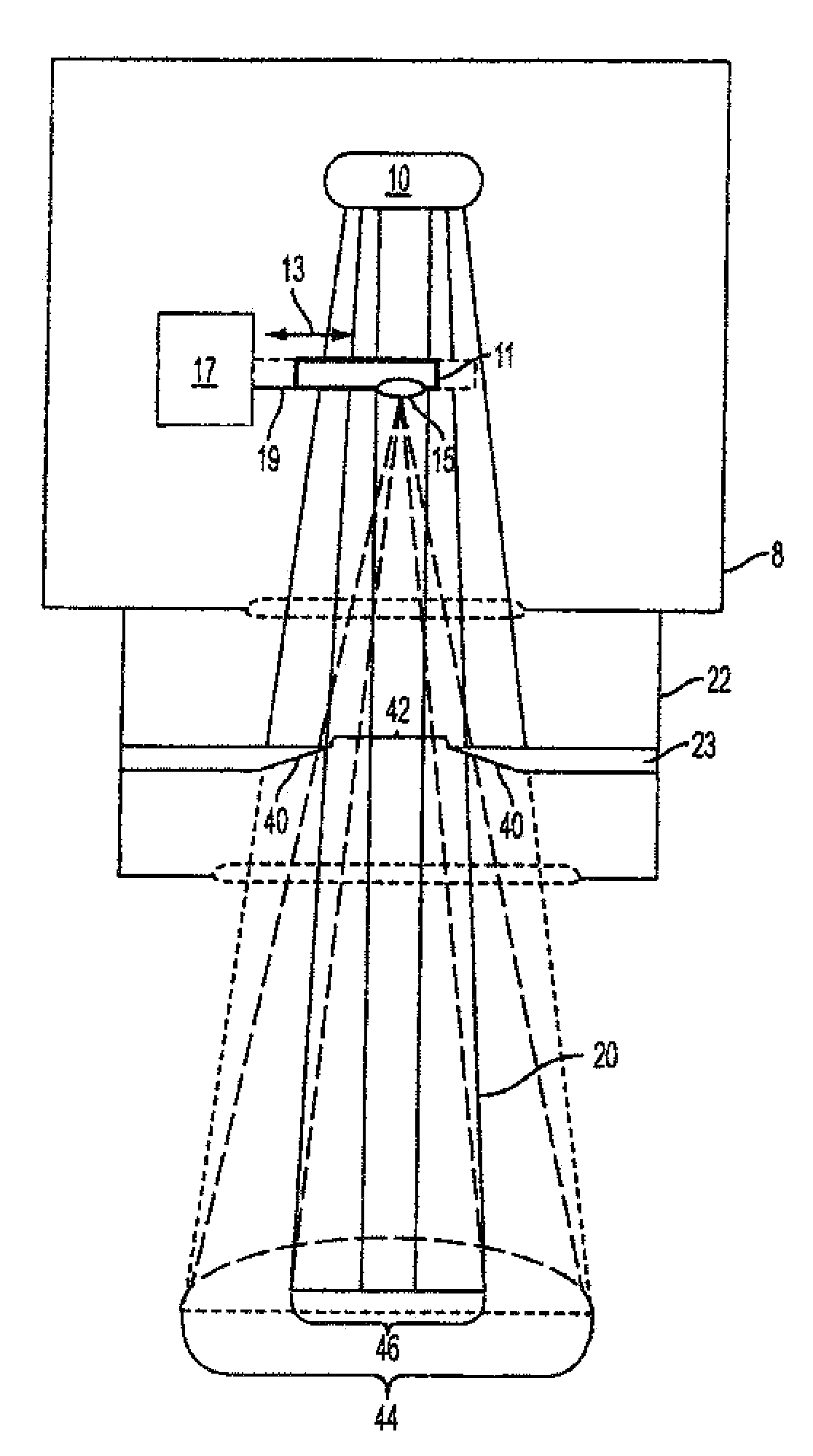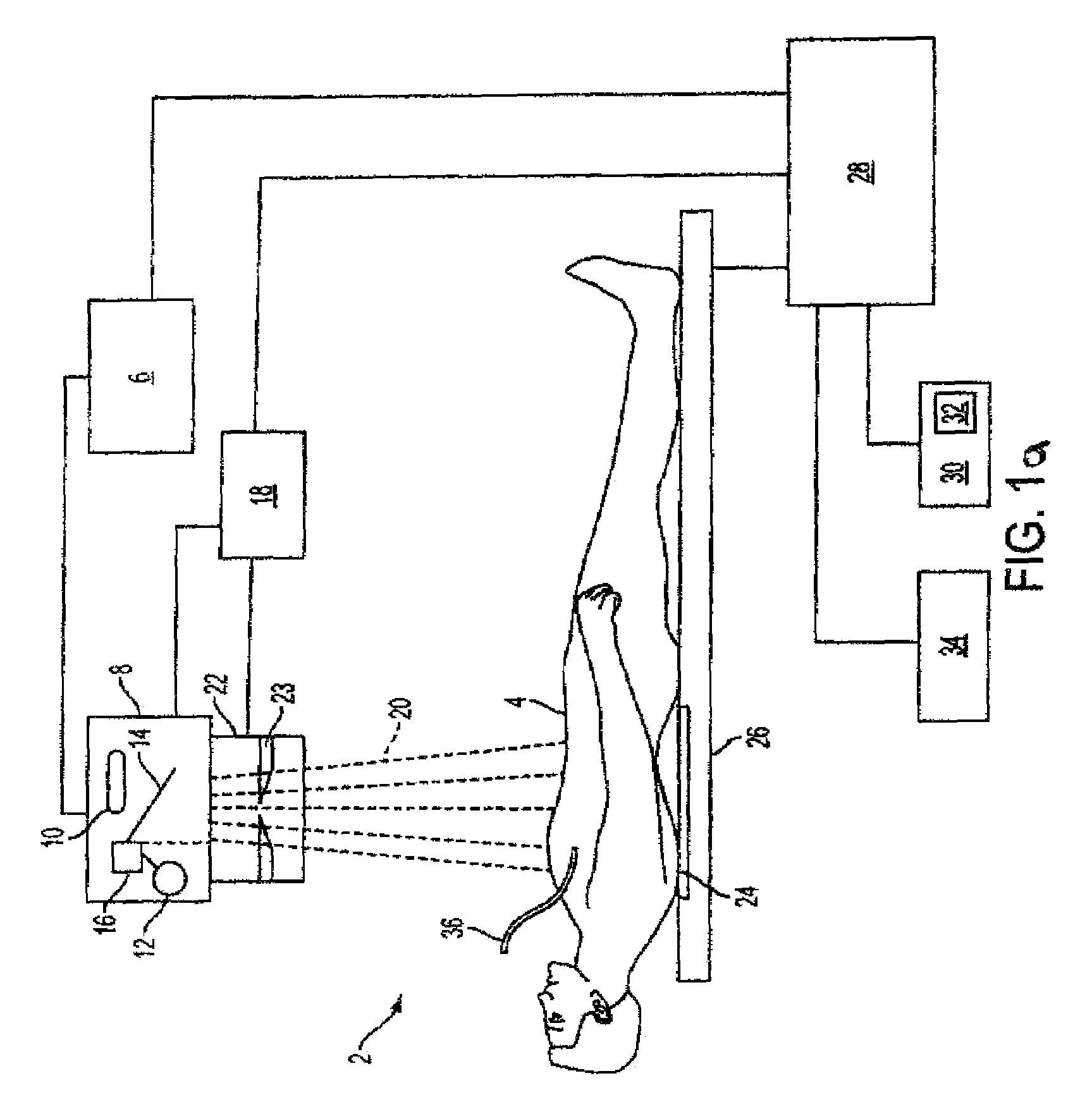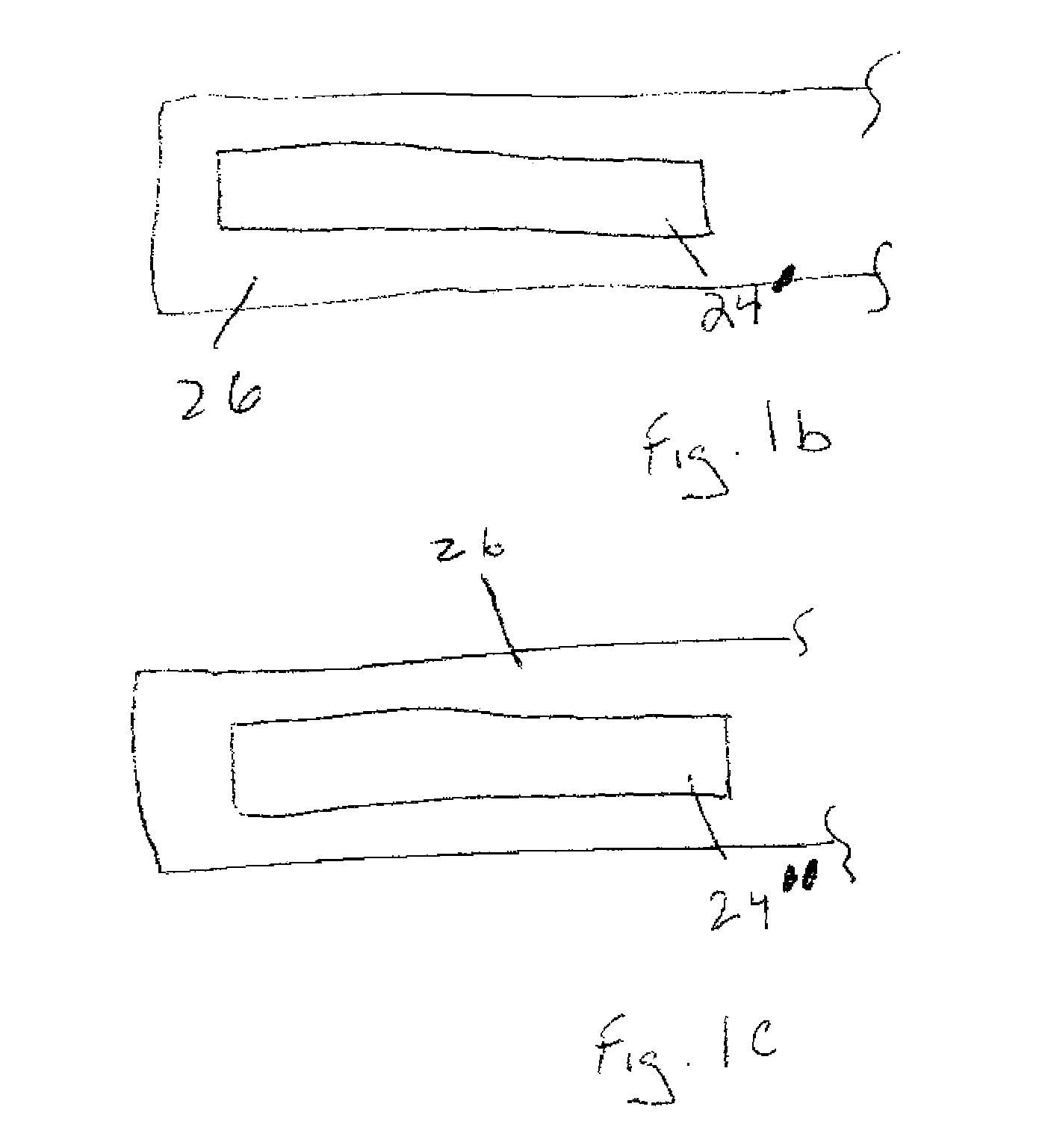Remote visual feedback of collimated area and snapshot of exposed patient area
a collimated area and remote visual feedback technology, applied in the field of medical xray imaging, can solve the problems of insufficient distance adjustment or proper distance adjustment between the patient and the x-ray source, cumbersome and time-consuming saving settings, double work, etc., to improve patient throughput, reduce patient and/or clinician exposure, and reduce dose levels
- Summary
- Abstract
- Description
- Claims
- Application Information
AI Technical Summary
Benefits of technology
Problems solved by technology
Method used
Image
Examples
Embodiment Construction
[0021]Reference will now be made in detail to exemplary embodiments of the present invention, examples of which are illustrated in the accompanying drawings, wherein like reference numerals refer to like elements throughout.
[0022]FIG. 1a represents an X-ray diagnostic imaging system 2 of the invention, under which is a patient 4 undergoing an X-ray examination procedure. The X-ray system 2 includes a high voltage transformer assembly 6, an X-ray source housing 8, comprising an X-ray tube 10, a camera 12, mirror 14 and mirror drive device 16. The X-ray source housing 8 is attached to a collimator assembly 22, including beam-limiting filter plates 23. The mirror drive device controls the positioning of mirror 14 into and out of the path of an X-ray beam 20, from X-ray tube 10, controls camera positioning and operation, and exchanges mirror position and camera position information with the system through position detecting and control device 18. With respect to the camera and mirror, m...
PUM
 Login to View More
Login to View More Abstract
Description
Claims
Application Information
 Login to View More
Login to View More - R&D
- Intellectual Property
- Life Sciences
- Materials
- Tech Scout
- Unparalleled Data Quality
- Higher Quality Content
- 60% Fewer Hallucinations
Browse by: Latest US Patents, China's latest patents, Technical Efficacy Thesaurus, Application Domain, Technology Topic, Popular Technical Reports.
© 2025 PatSnap. All rights reserved.Legal|Privacy policy|Modern Slavery Act Transparency Statement|Sitemap|About US| Contact US: help@patsnap.com



